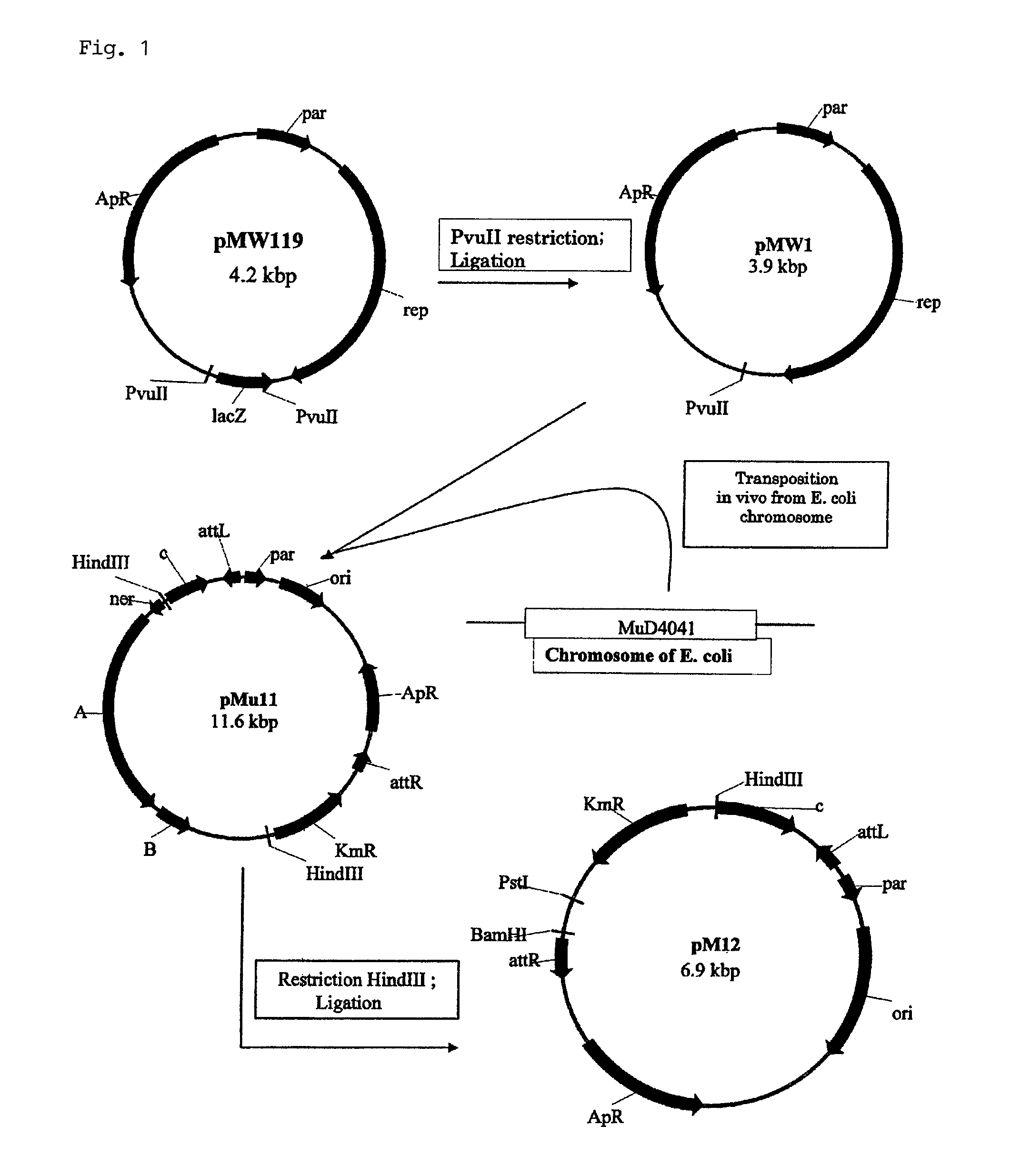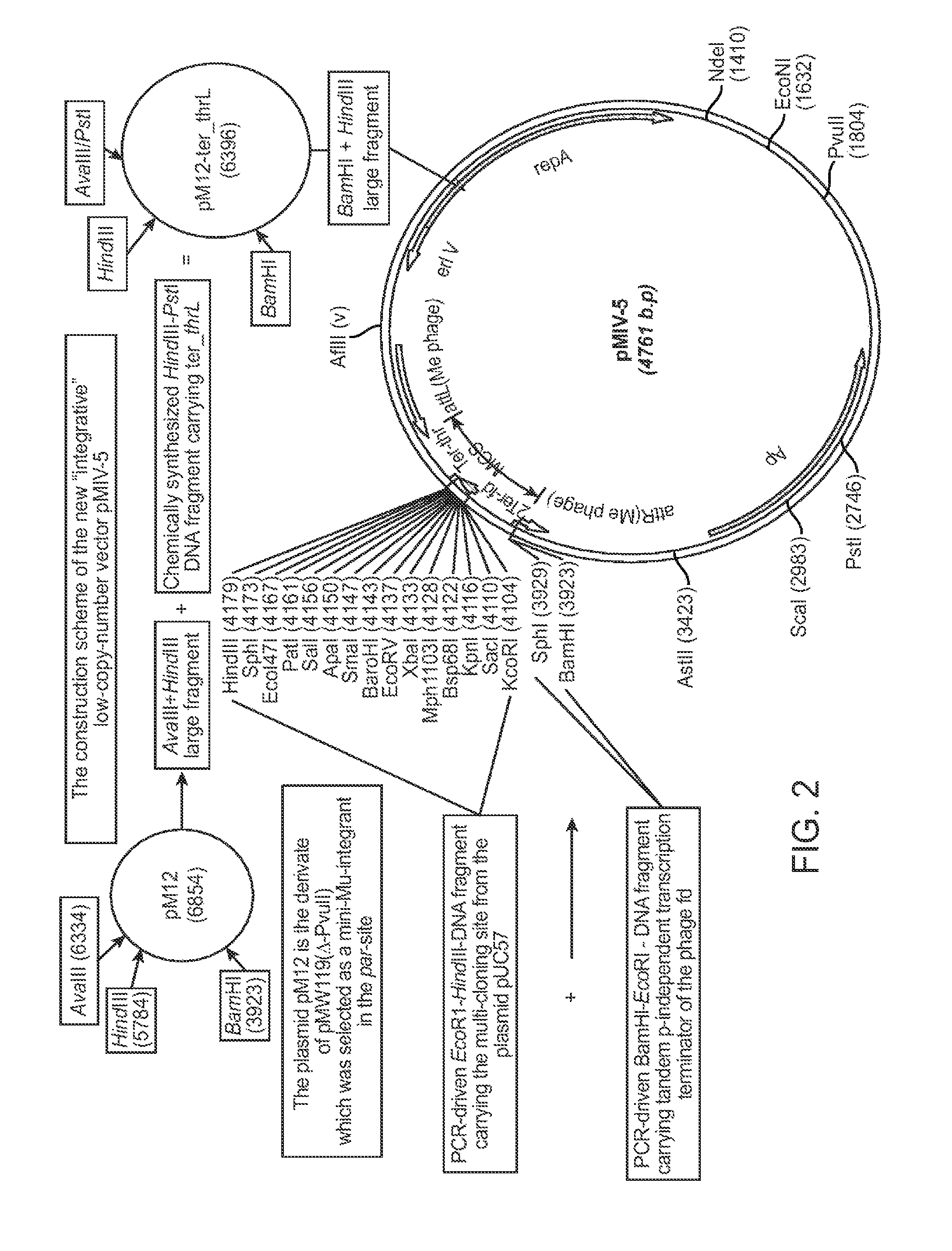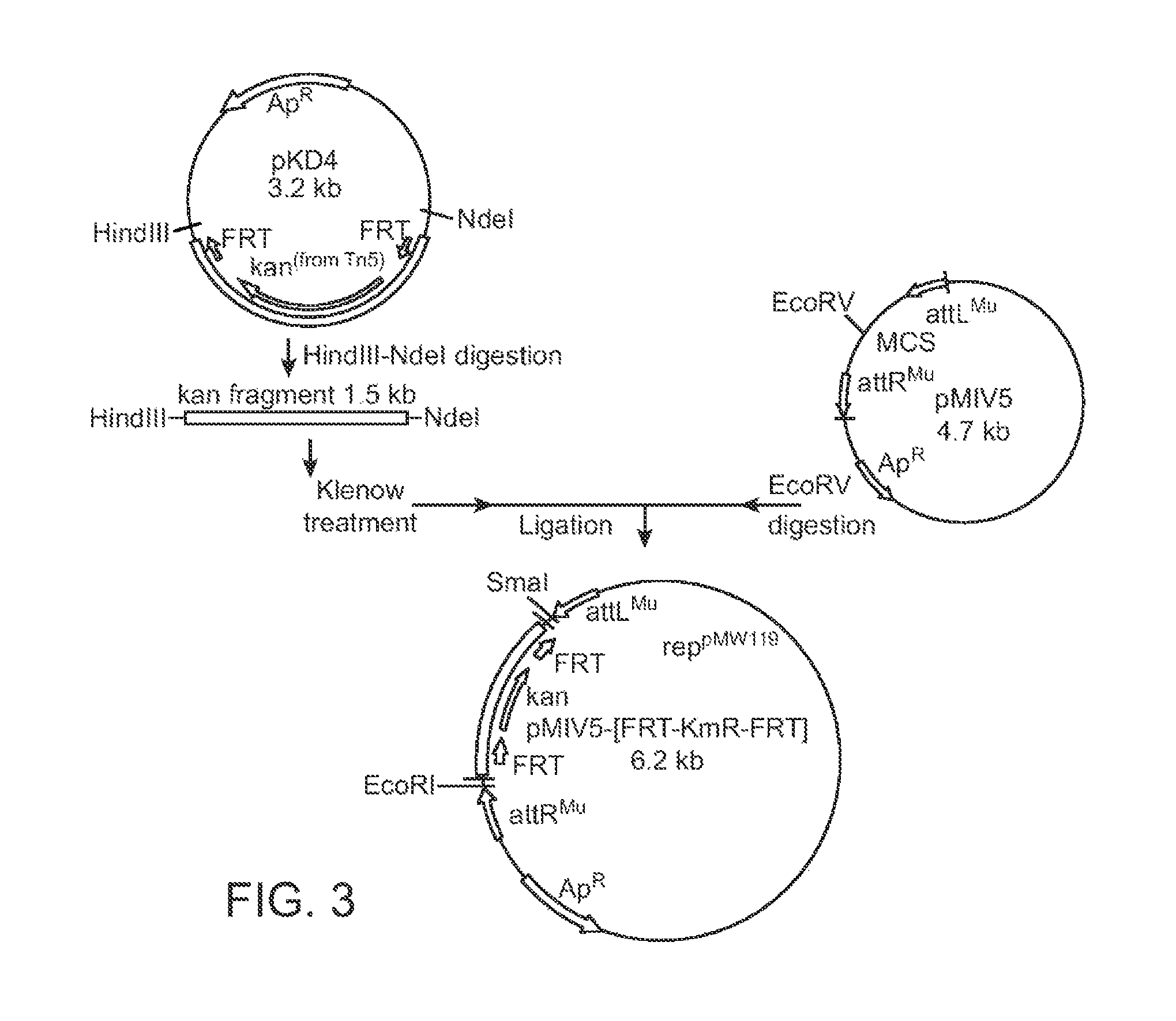Method for production of L-lysine using methanol-utilizing bacterium
a technology of methanol and lysine, which is applied in the field of lysine production by fermentation and microorganisms, can solve the problems of not being able to increase the yield of lysine, the amount of lysine produced is small, and the gene of methylophilus /i> is not known to increase, so as to achieve abundant and inexpensive availability of lysine, the effect of efficient production
- Summary
- Abstract
- Description
- Claims
- Application Information
AI Technical Summary
Benefits of technology
Problems solved by technology
Method used
Image
Examples
example 1
Construction of the Mini-Mu System, pMIV-Km, pMIV-Km-EA, pAET7
[0207]A gene incorporation system using the bacteriophage Mu-phage isolated from Escherichia coli was used to increase the copy number of the lysE24 gene (a DNA encoding a mutant LysE protein) and the mutant dapA gene (a DNA encoding a dihydrodipicolinate synthase which is desensitized to feedback inhibition by L-lysine) on the chromosome.
[0208]Construction of pMIV5 (FIGS. 1 and 2)
[0209]In order to incorporate Mu-phage into the chromosome of Escherichia coli, a drug resistance gene located between the recognition sequences attL and attR, and a transferase (Mu transposase) are required. It is not always necessary that both of them are incorporated into the same vector, and first, the pMIV5 plasmid was constructed, which contains the recognition sequences attL and attR and a kanamycin resistance gene, while the pAET7 plasmid with the Mu transposase was constructed separately. Both of the plasmids can function when they are ...
example 2
Incorporation of the lysE24 and Mutant dapA Genes into the Chromosome of Methylophilus methylotrophus, and the Acquisition of VAE#1
[0215]First, pAET7 was introduced into the M. methylotrophus AS strain by electroporation, and the bacterium was inoculated onto an SEII plate containing 50 mg / l streptomycin. Then, the pMIV-Km-lysE24dapA plasmid was introduced into the resulting transformant to obtain strains that formed colonies on the SEII plate containing 20 mg / l kanamycin and 50 mg / l streptomycin. The mini-Mu cassette includes a kanamycin resistance gene, and the pMIV-Km-lysE24dapA plasmid, which cannot replicate in M. methylotrophus. Therefore, the kanamycin-resistant strain has the mini-Mu cassette inserted into the chromosome. Accordingly, 200 strains were selected randomly from these strains and spread onto an SEII plate containing 50 mg / l streptomycin and 20 mg / L kanamycin, followed by culturing at 37° C. overnight. Then, bacterial cells present on the medium surface of about 0...
example 3
Acquisition of a Strain where lysE24 and Mutant dapA Genes are Incorporated at Higher Copy Numbers (VAE#8)
[0216]The VAE#1 strain was shown to have one or two copies of the mini-Mu cassette inserted into the chromosome. Therefore, in order to improve productivity of L-lysine, the mini-Mu cassette was amplified on the chromosome. A gene encoding the MuC protein, which is capable of suppressing the Mu transposase activity, is on the pAET7 plasmid carrying the Mu transposase. The MuC protein is temperature sensitive, and therefore, when the strain is cultured at 42° C., the Mu transposase activity is promoted, resulting in amplification of the mini-Mu cassette on the chromosome. Specifically, the VAE#1 strain was suspended in SEII liquid medium to an appropriate concentration, and the suspension was incubated at 42° C. for 1 hour and diluted to appropriate concentrations. The bacterial solutions were inoculated onto SEII plates containing 50 mg / L streptomycin and 20 mg / L kanamycin to fo...
PUM
| Property | Measurement | Unit |
|---|---|---|
| temperature | aaaaa | aaaaa |
| temperature | aaaaa | aaaaa |
| temperature | aaaaa | aaaaa |
Abstract
Description
Claims
Application Information
 Login to View More
Login to View More - R&D
- Intellectual Property
- Life Sciences
- Materials
- Tech Scout
- Unparalleled Data Quality
- Higher Quality Content
- 60% Fewer Hallucinations
Browse by: Latest US Patents, China's latest patents, Technical Efficacy Thesaurus, Application Domain, Technology Topic, Popular Technical Reports.
© 2025 PatSnap. All rights reserved.Legal|Privacy policy|Modern Slavery Act Transparency Statement|Sitemap|About US| Contact US: help@patsnap.com



